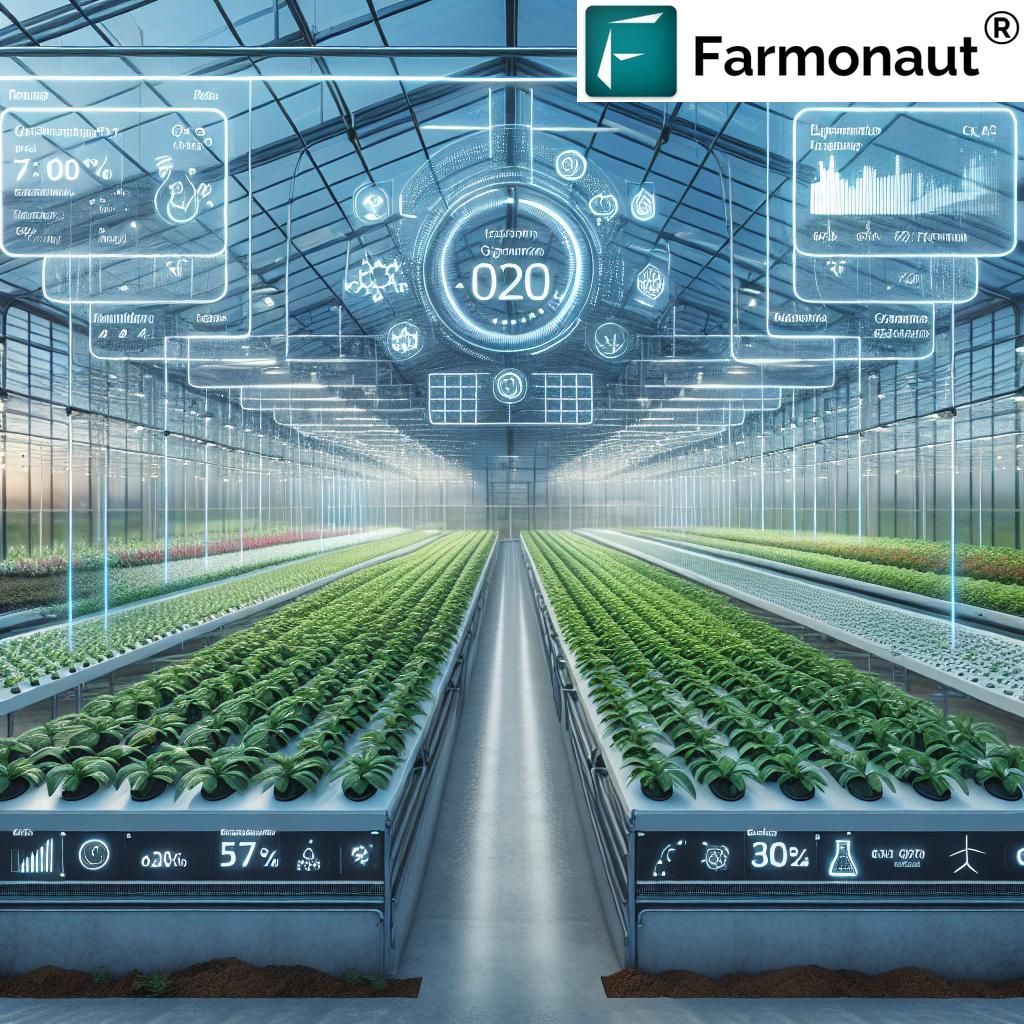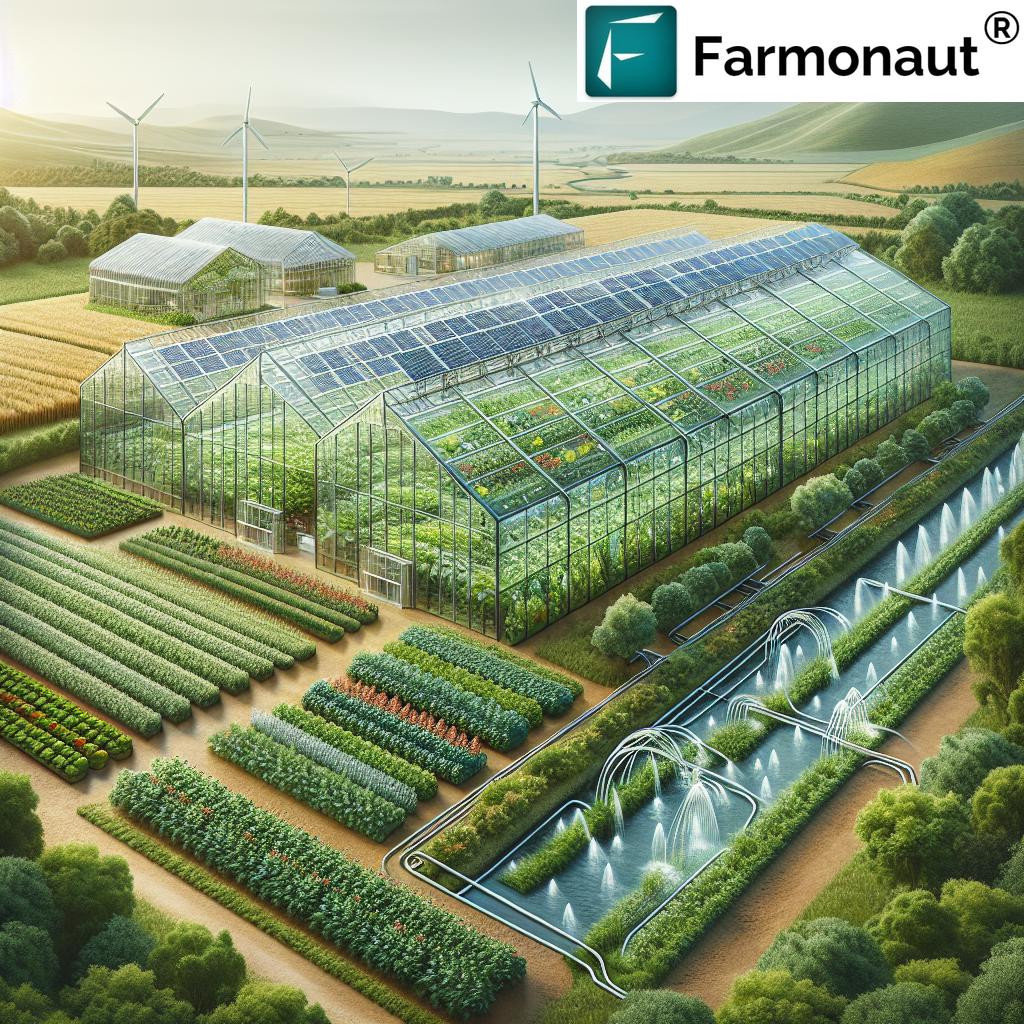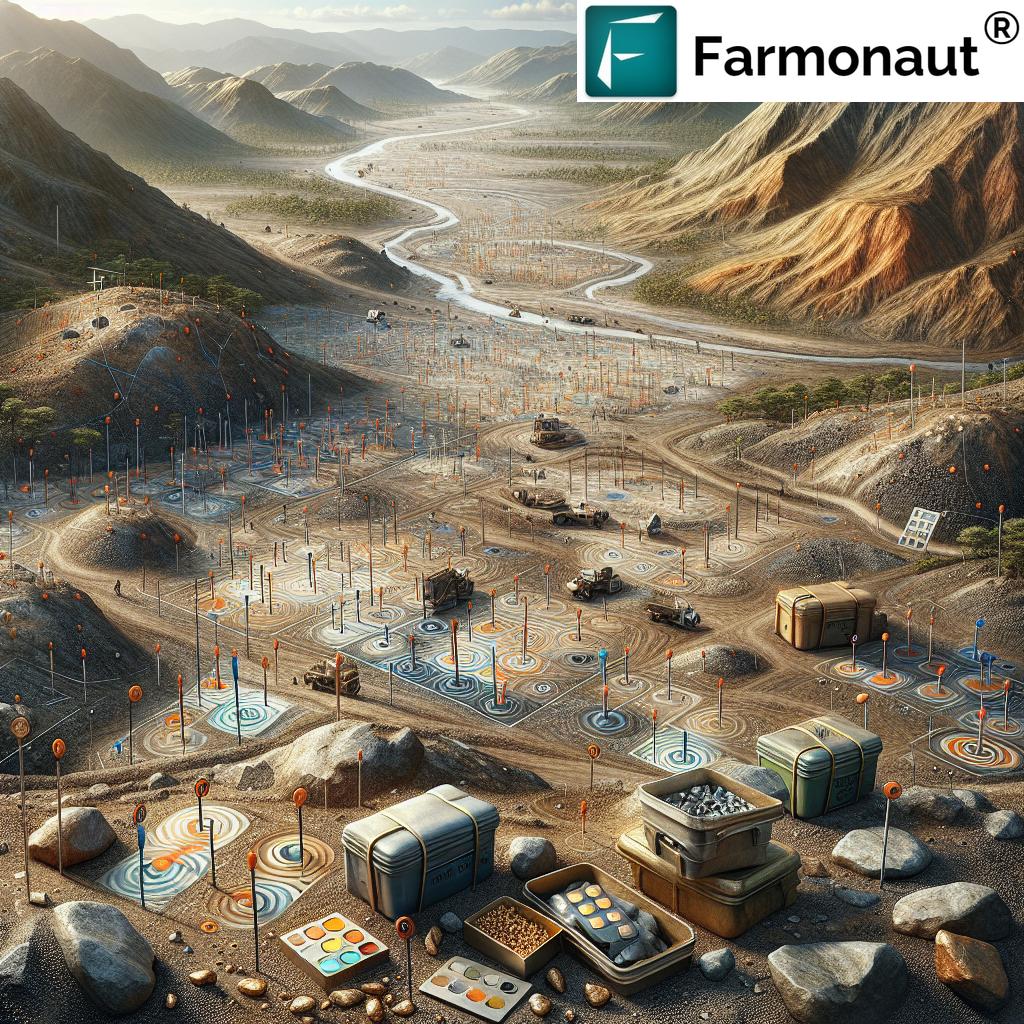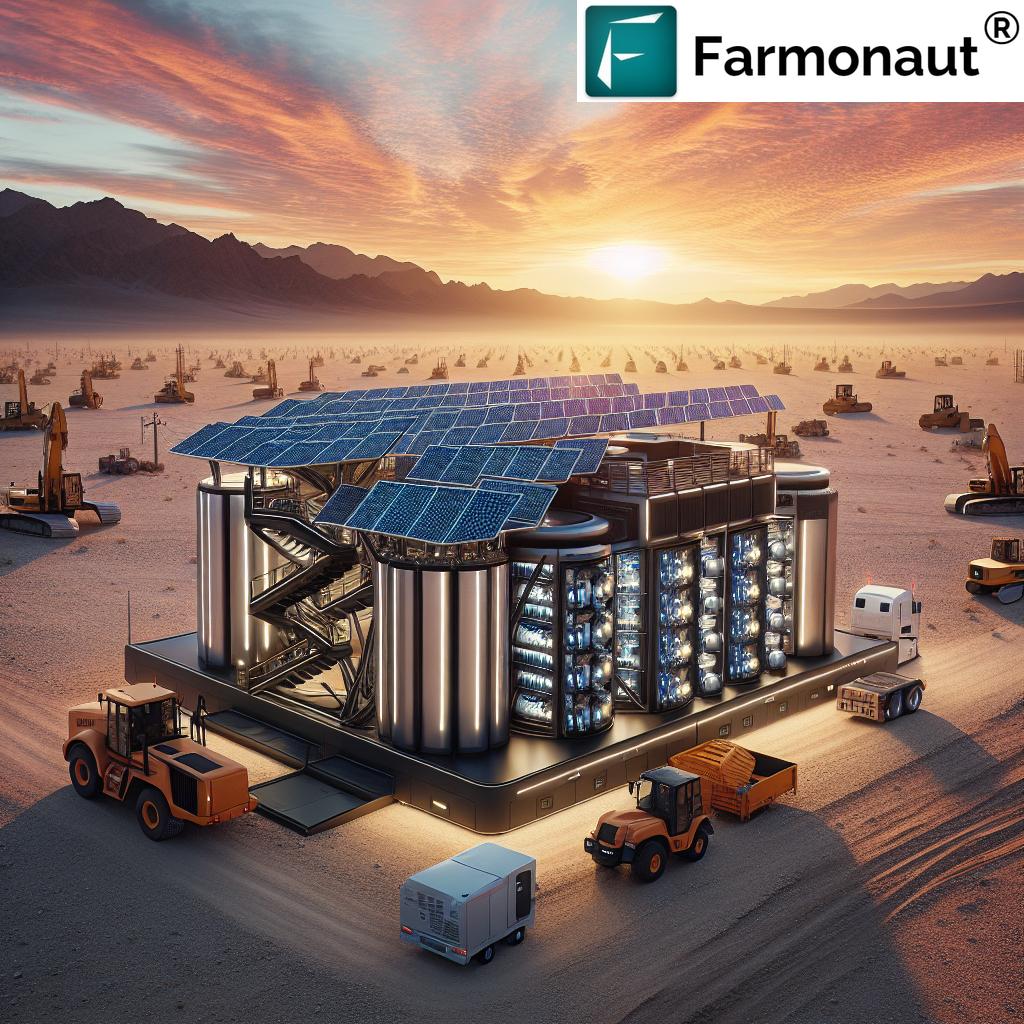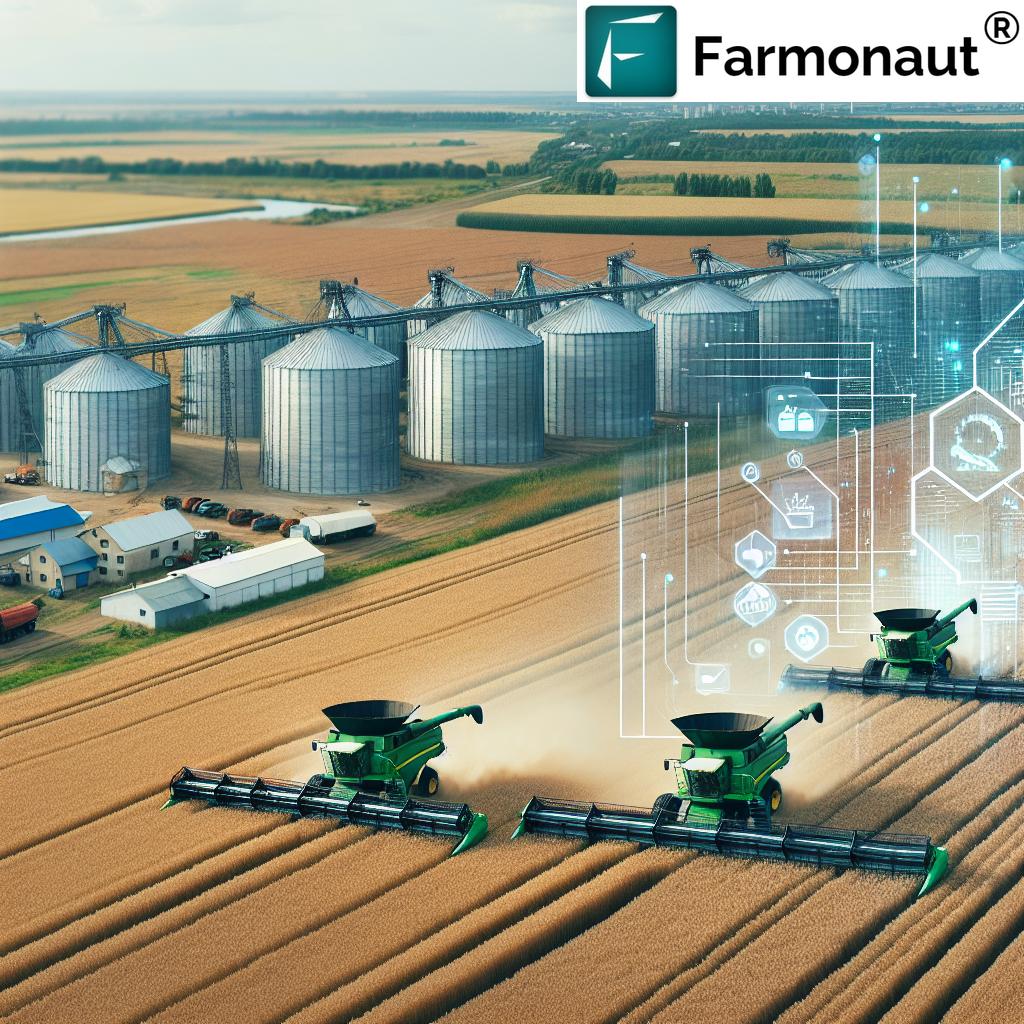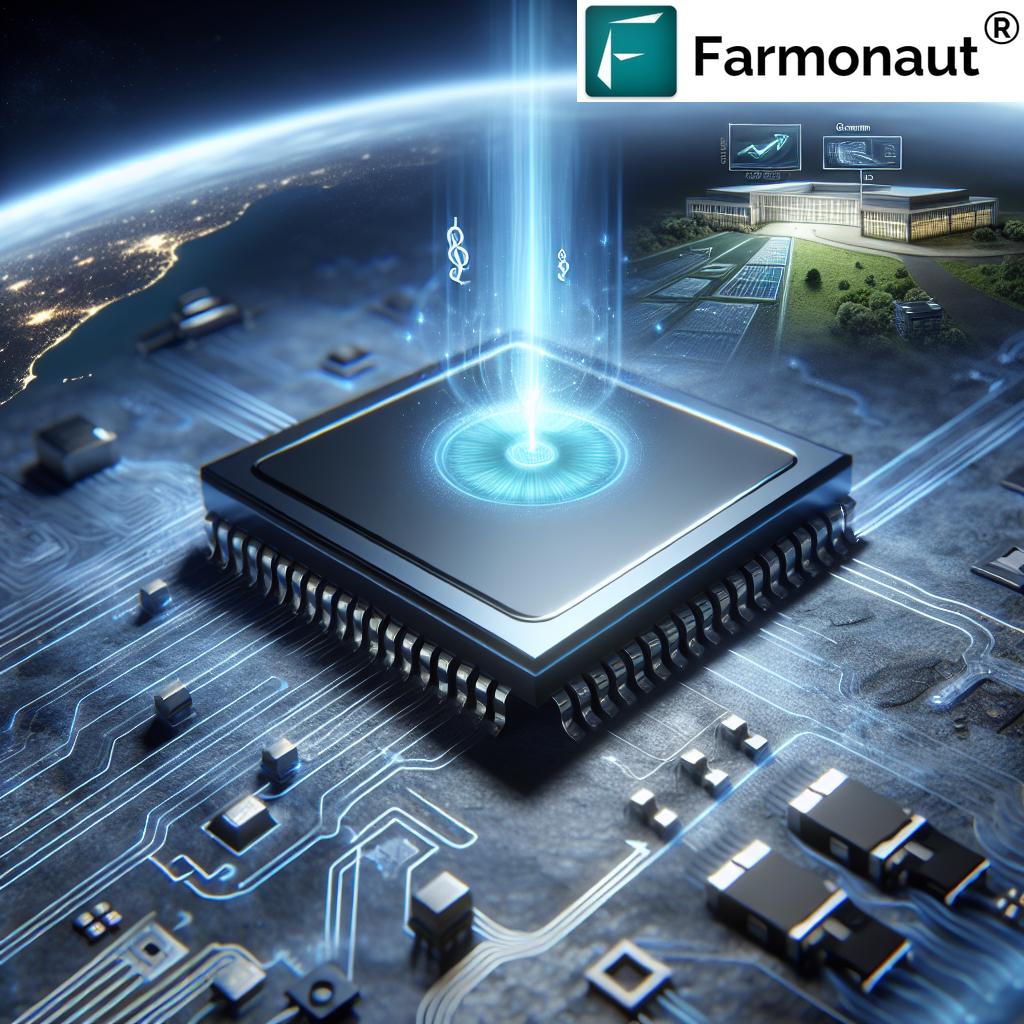Smart Greenhouse Market Booms: Shocking 2024 Trends!
Meta Description: Smart greenhouse technology is revolutionizing agriculture with advanced systems and sustainable solutions, driving unprecedented market growth in 2024.
Introduction: The Smart Greenhouse Revolution
The smart greenhouse market is experiencing an unprecedented boom in 2024. Driven by the urgent need for sustainable agriculture solutions, advanced greenhouse systems are integrating powerful new technologies—IoT, AI, sensor data analytics, and automation—to revolutionize farming and forestry worldwide. As we face climate change, resource scarcity, and food demand challenges, our agricultural sector is undergoing a transformative shift toward smarter, more efficient, and environmentally responsible greenhouse practices.
In this comprehensive guide, we’ll explore how smart greenhouse technology unlocks new opportunities to optimize production, reduce costs, and foster sustainable food systems for the future. Whether you’re a grower, agribusiness, policymaker, or tech enthusiast, discover the trends and innovations reshaping how we nurture plants, manage resources, and secure our food supply.
Understanding Smart Greenhouses & Their Role in Sustainable Agriculture
At the heart of the agricultural revolution is the smart greenhouse—a high-tech structure designed to integrate advanced technologies for continuous monitoring, automated control, and precision management of the indoor crop environment. By combining automation, data analytics, and modern farming practices, these systems address key challenges facing traditional greenhouses:
- Climate variability and unpredictable seasons
- Water and resource scarcity
- Labor shortages and rising operational costs
- Need for higher yields and superior crop quality
- Increasing consumer demand for safe, traceable food
Our adoption of internet of things (IoT), artificial intelligence, machine learning, and sensor devices in these environmental control systems is unlocking new levels of efficiency, sustainability, and profitability for farmers worldwide.
Key Technologies Driving Smart Greenhouse Market Growth
To truly understand this booming industry, let’s break down the key technologies at the heart of today’s smart greenhouse technology. Each component delivers unique advantages, but together, they are transforming how we optimize crop production and resource utilization.
1. IoT and Sensor Technology: Smart Farming with IoT
- IoT sensors are embedded throughout the greenhouse—measuring soil moisture, temperature, humidity, CO2 levels, and light irradiance.
- These devices provide continuous environmental monitoring and control, enabling us to make rapid adjustments that ensure optimal conditions for plants.
-
By leveraging real-time data, we can optimize resource consumption (water, fertilizers, energy) and reduce waste.
(source: Greenhouse Grower)
2. Artificial Intelligence and Machine Learning: AI in Greenhouse Agriculture
- AI algorithms analyze sensor-collected data to recognize crop health patterns, predict pest outbreaks, and anticipate weather shifts.
- Automated climate control systems, powered by machine learning, adjust heating, cooling, ventilation, and CO₂ injection for precise greenhouse environment optimization.
- AI in greenhouse agriculture empowers advanced yield forecasting and proactive intervention to improve crop quality and reduce losses.
3. Automated Systems: Efficiency Through Smart Automation
- Automated irrigation adapts water application precisely to soil moisture, minimizing waste and cost.
- Automated lighting and shading optimize illumination for plant growth while saving energy—enabling year-round, climate controlled greenhouse production.
- With fewer manual interventions, we maximize operational efficiency and allow labor to focus on value-added tasks.
4. Data Analytics & Cloud Integration: Precision Farming Technology
- Sensor and device data flow into centralized platforms for visualization and advanced analytics.
- Digital dashboards empower farmers to compare historic and real-time trends, improving management and fast data-driven decisions.
- Cloud-connected precision farming technology allow integration with farm management, logistics, and traceability systems.
5. Blockchain & Traceability: Transparency for Modern Markets
- Blockchain-based traceability ensures food safety and authenticity by documenting each product’s journey from greenhouse to consumer.
- This builds trust among buyers and helps greenhouses meet growing regulatory and export requirements.
- Discover end-to-end supply chain transparency with Farmonaut’s Traceability Solutions—empowering product authentication and reducing fraud.
Major Benefits of Advanced Greenhouse Systems
The rise of smart greenhouse technology delivers measurable improvements for the agricultural sector—revolutionizing our approach to production, sustainability, and resource efficiency.
- Year-Round Crop Production: Climate controlled greenhouses allow consistent food production despite seasonal changes, boosting our ability to meet steady market demand and generate higher value crops.
- Enhanced Yields & Improved Quality: Optimizing environmental parameters like humidity, temperature, and CO₂ enables 20–30% higher yields and superior produce quality over traditional methods.
- Resource Efficiency: Greenhouse resource optimization cuts water usage up to 30% and energy consumption by as much as 20%, thanks to precise, data-driven application of resources.
- Sustainability: Many systems integrate renewable energy (e.g. solar panels) and water-saving hydroponics, helping us meet global sustainability goals and reduce agriculture’s environmental impact.
- Reduced Labor & Operational Costs: Automation and predictive analytics reduce costly manual tasks, cut down on food waste, and lower overall greenhouse management expenses.
- Food Safety & Traceability: Blockchain-powered transparency and tight control help us meet consumer and export demands for safe, authentic food.
- Scalability: With modular and cloud-based solutions, it’s easier for us to scale our operations—whether we’re managing a small urban farm or a vast, commercial greenhouse network.
Comparative Market Growth Table: Technology Impact on Agriculture
| Technology/System | 2024 Adoption Rate (%) | Resource Savings (%) | Projected Market Value (USD Millions) |
|---|---|---|---|
| Automated Climate Control | 61 | Water: 28, Energy: 21 | $710 |
| IoT Environmental Sensors | 67 | Water: 31, Fertilizer: 19 | $630 |
| AI-Based Irrigation Management | 39 | Water: 37, Labor: 24 | $470 |
| Automated Lighting/LED Systems | 49 | Energy: 23 | $290 |
| Blockchain-based Traceability | 17 | Product Loss/Waste: 9 | $120 |
All values are market research-based 2024 estimates.
Source: GreenhouseGrower, Mordor Intelligence, GlobeNewswire, Farmonaut analysis.
Global Greenhouse Market Dynamics & Regional Insights
The global market for smart greenhouses is on a rapid upward trajectory, spurred by both technological advancements and mounting environmental and economic pressures on traditional agriculture.
Key Growth Drivers
- Efficient resource utilization and ongoing water scarcity push more countries to adopt advanced greenhouse systems.
- Cities and companies, especially in urban and peri-urban locations, are increasingly turning to precision greenhouses for fresh produce close to consumers, minimizing food miles.
- Government incentives and sustainable agriculture policies are expected to fuel further expansion, especially in North America, Europe, and Asia-Pacific.
Regional Market Highlights
- North America: The United States leads, contributing about 87% of the region’s smart greenhouse market in 2024, supported by advanced infrastructure and a focus on environmental sustainability.
- Europe: France commands 17% of the regional market, blending its agricultural legacy with modern innovation to set an example for neighboring European countries.
- Asia-Pacific: China dominates through strong government-backed agricultural modernization programs and fast-rising rates of technology adoption amongst growers.
These regional leaders exemplify how both public and private sector investment, along with education in advanced systems, are crucial for scaling smart greenhouse adoption.
Smart Greenhouse Insights: Video Explainers
Smart Greenhouse Market: Challenges & Emerging Opportunities
Despite their clear benefits, the path to widespread adoption of smart greenhouses is not without obstacles. We must navigate these challenges as well as seize the exciting opportunities for growth and innovation in the global agri-tech landscape.
Primary Challenges
- High Initial Costs: Advanced greenhouses often require substantial capital for construction, outfitting with automation, and establishing robust IoT infrastructure—posing a barrier to small and mid-sized farmers.
- Technological Complexity: Maintaining and operating smart systems calls for specialized knowledge, sometimes lacking in rural communities or developing regions.
- Energy Consumption: While smart controls cut waste, some greenhouse operations are still energy intensive, especially in cold or harsh climates without renewables integration.
Innovation & Market Growth Opportunities
- Sustainable Technologies: Next-generation materials, passive solar, and closed-loop hydroponic techniques are advancing the environmental—and economic—efficiency of new greenhouse systems.
-
Vertical Integration: Controlling the supply chain from seed to retailer allows for consistent quality, traceability, and efficiency gains.
Learn more about Farmonaut’s Fleet Management—a powerful tool for optimizing logistics and reducing operational costs, especially for agricultural businesses managing multiple greenhouse sites and deliveries. - Urban and Peri-Urban Market Expansion: As cities densify, greenhouse farming moves closer to consumers for rapid delivery and minimized environmental footprint.
- API Integration: For agricultural innovators and developers, incorporating satellite and weather data is now more accessible than ever. Explore the Farmonaut API or dive into the API Developer Documentation for advanced integration opportunities.
- Large-Scale Farm Management: Enterprise-level greenhouse networks can benefit from digital tools for cross-location monitoring, analytics, and collaboration. Check Farmonaut’s Large Scale Farm Management Suite for insight into centralized, scalable, and data-driven agriculture operations.
Sustainability and Carbon Monitoring
Sustainability is no longer a choice—it’s a necessity. All stakeholders are under increased scrutiny to monitor, report, and reduce carbon footprints in agriculture. Farmonaut’s Carbon Footprinting Tools provide actionable, satellite-based metrics to help greenhouses and farmers comply with environmental standards and progress toward emissions reduction targets.
How Farmonaut Empowers Smart Farming and Greenhouse Operators
As agriculture becomes increasingly technology-driven, Farmonaut stands out by making precision agriculture accessible and scalable—across greenhouses, open-field farming, forestry, and plantations. But how exactly does Farmonaut serve greenhouse operators and innovators?
Satellite-Based Real-Time Monitoring & Resource Management
- Leverage multispectral satellite imagery to assess vegetation health (NDVI), soil moisture levels, and real-time crop stress.
- Make smarter irrigation, fertilization, and pest management decisions—minimizing waste and maximizing yields, aligning directly with greenhouse resource optimization and sustainability mandates.
AI-Powered Crop Advisory & Decision Support
- Farmonaut’s Jeevn AI Advisory System uses satellite and meteorological data to deliver personalized farm advice, weather forecasts, and actionable alerts.
- This reduces risk, saves time, and helps us enhance crop production quality and operational efficiency with precision farming technology.
Blockchain Traceability & Food Supply Transparency
- As detailed earlier, blockchain integration allows full traceability from greenhouse to market—critical for high-value and export crops, or in food safety-sensitive supply chains.
- Traceability isn’t just compliance—it’s a quality and branding advantage.
Fleet and Logistics Management for Greenhouse Enterprises
- Track and optimize vehicle and equipment use across greenhouse sites using Farmonaut’s Fleet Management tools to minimize operational costs and ensure safer, more efficient deliveries.
Carbon Footprinting and Environmental Compliance
- Monitor greenhouse emissions, analyze water and energy usage, and implement best practices for sustainable agriculture solutions.
- Satisfy regulatory and market demands for environmental data with Farmonaut’s Carbon Footprint Tracking.
Scalable Solutions for All: From Family Farms to Governments
- Whether managing a single smart greenhouse or large-scale peri-urban projects, Farmonaut supports owners, managers, agribusinesses, government agencies, financial institutions, and supply chain partners.
- Choose from web, mobile, and API-based farm management to suit your operational scale.
Essential Tools & Solutions for Smart Greenhouse Operators
-
Web & Mobile Apps for Satellite-Driven Farm Management:
Launch the Farmonaut App now to get real-time crop and resource insights right from your phone or desktop. -
Product Traceability:
Ensure full food supply chain transparency—from greenhouse to end consumer, critical for compliance, export, and brand protection. -
Carbon Footprinting:
Monitor and improve greenhouse sustainability with actionable, satellite-based environmental metrics. -
Fleet Management:
Use advanced tools to reduce logistics costs, improve safety, and increase operational reliability for greenhouse enterprises. -
API for Developers:
Access Farmonaut’s Satellite & Weather API for integration with your custom smart greenhouse solutions. View Developer Docs -
Crop, Plantation & Forest Advisory:
Access data-driven advisory for broad-acre crops, forestry, and plantation management via Farmonaut’s platform. -
Large-Scale Agribusiness & Government:
Unlock enterprise farm management and analytics with Farmonaut’s Agro Admin Suite.
The Future Outlook for the Smart Greenhouse Market
Looking ahead, the integration of IoT, AI, and cloud technologies is reshaping not just greenhouses, but the entire agricultural sector’s path to sustainability and profitability. The global smart greenhouse market is expected to reach $3.23 billion by 2028, with a compound annual growth rate (CAGR) of 9.6% from 2023 onwards.
What’s driving this explosive growth?
- Rising global demand for food as the world’s population and urbanization increases.
- Climate change and environmental regulation push us toward more controlled, efficient production systems.
- Continuous innovation and cost reduction in sensors, satellite data, automated systems, and analytics will further democratize smart greenhouse adoption worldwide.
- Commercialization of vertical farms and urban agri-systems, expanding the definition of what a greenhouse can be.
As we move toward 2025 and beyond, one thing is clear: Advanced greenhouse systems, coupled with smart data and automation, will be central to meeting future food, resource, and sustainability goals across global agriculture and forestry. The winners will be those who embrace technology, continuously upskill, and prioritize not just profitability, but the long-term stewardship of our planet.
Frequently Asked Questions: Smart Greenhouse Market & Tech
What is a smart greenhouse?
A smart greenhouse is a controlled environment agriculture (CEA) structure equipped with IoT sensors, AI-based decision support, automation systems, and advanced climate controls. These greenhouses enable precise environmental monitoring and resource management to maximize crop growth, yield, and quality while minimizing resource waste and costs.
How do smart greenhouses improve resource efficiency?
By integrating real-time sensors and automated systems, smart greenhouses deliver optimal irrigation, lighting, temperature, and nutrient management. This leads to lower water and energy usage, reduced fertilizer application, and overall more efficient resource utilization compared to traditional greenhouses.
What technologies are driving greenhouse market growth?
The biggest drivers are IoT sensors for environmental data collection, AI and machine learning for predictive analytics and automation, blockchain for traceability, and cloud-connected platforms for operational efficiency and large-scale farm management.
Who benefits from adopting smart greenhouse technology?
Individual farmers, agribusiness companies, urban farming entrepreneurs, food processing industries, retail and export supply chains—all stand to gain from increased productivity, lower costs, and better compliance, food safety, and sustainability.
How does Farmonaut support greenhouse operators?
Farmonaut empowers users with satellite-based monitoring, AI advisory, traceability, fleet management, and carbon footprint tracking—available via web, app, and API. This enables real-time data-driven decisions, scalable management, and high-level compliance for greenhouse innovators.
Can small farmers afford smart greenhouse technology?
While initial costs can be significant, cloud-based and API-driven services like Farmonaut seek to democratize precision agriculture—making these powerful solutions more affordable and accessible for small and medium growers.
Where can I learn more or get started?
Download Farmonaut’s app, explore their API, or check out detailed guides on their website to start leveraging smart greenhouse tools and insights for your farm management needs.
Farmonaut Subscription Plans: Affordable Access to Smart Farming & Greenhouse Solutions
Choose a plan that fits your scale—from small farms to enterprise solutions for greenhouse networks, plantation advisory, or government-wide digital agriculture projects.
Summary: The Smart Greenhouse Market – Revolutionizing Agriculture, Farming, and Forestry
The agricultural sector stands at the cusp of a transformative shift, with smart greenhouses heralding a new era of resource-efficient, high-yield, and climate-resilient farming. Through convergence of IoT, AI, cloud, automation, and blockchain, our greenhouses are now equipped to optimize plant environments, reduce waste, and respond nimbly to change. Whether you grow food, manage forestry, or supply agricultural solutions, embracing smart greenhouse technology is key to staying competitive and achieving sustainability goals in 2024 and beyond.
Farmonaut, by democratizing access to data-driven precision agriculture, is lowering barriers for all—empowering everyone from family farm to global agribusiness to succeed in this booming, rapidly innovating marketplace.





